Abstract
Since the F1 hybrid (B14 × Oh43) had been shown to have a higher (heterotic) level of nitrate reductase activity than either inbred parent (B14 or Oh43), studies were undertaken to determine the mode of inheritance. Standard methods for determining Mendelian inheritance were used to study segregation for level of nitrate reductase activity of individual plants. The genetic material used was the inbreds B14 and Oh43, F1, F1 backcrossed to both parents, F2, F3, and F4 generations of the cross B14 × Oh43. The plant material was grown in the field and in growth chambers.
It was shown that the maize inbreds B14 and Oh43 differ at two loci that control the level of nitrate reductase activity. Each inbred is homozygous for a dominant or partially dominant allele at one locus and homozygous recessive at a second locus. The locus at which B14 carries a dominant allele carries the recessive allele in Oh43. Oh43 has both a higher in vivo rate of synthesis of nitrate reductase and higher in vivo and in vitro loss of enzyme activity (decay) than B14. Thus, the rates of both enzyme synthesis and decay are factors governing the level of nitrate reductase activity in corn. The data suggest that the heterotic level of nitrate reductase activity in the F1 hybrid is the result of inheritance of qualities that gives it “intermediate” rates of enzyme synthesis and decay.
Full text
PDF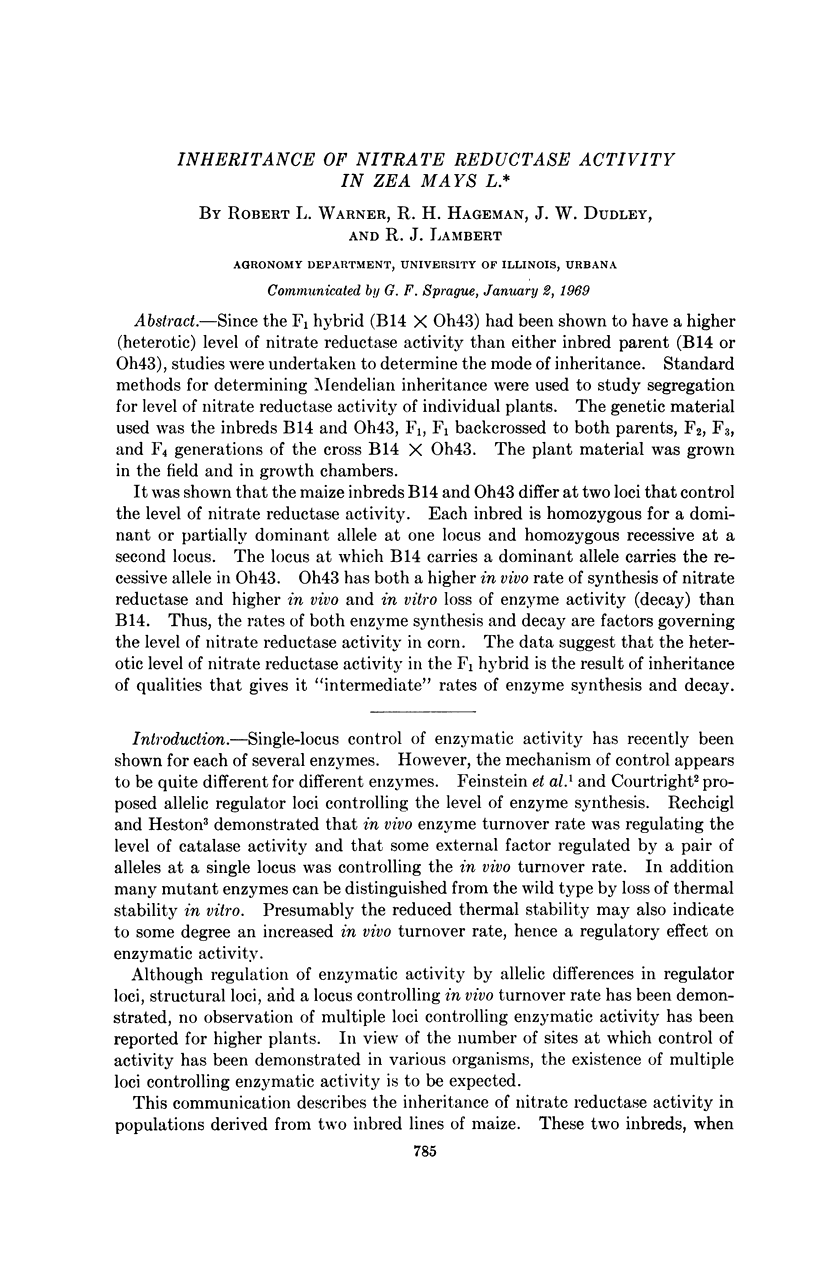
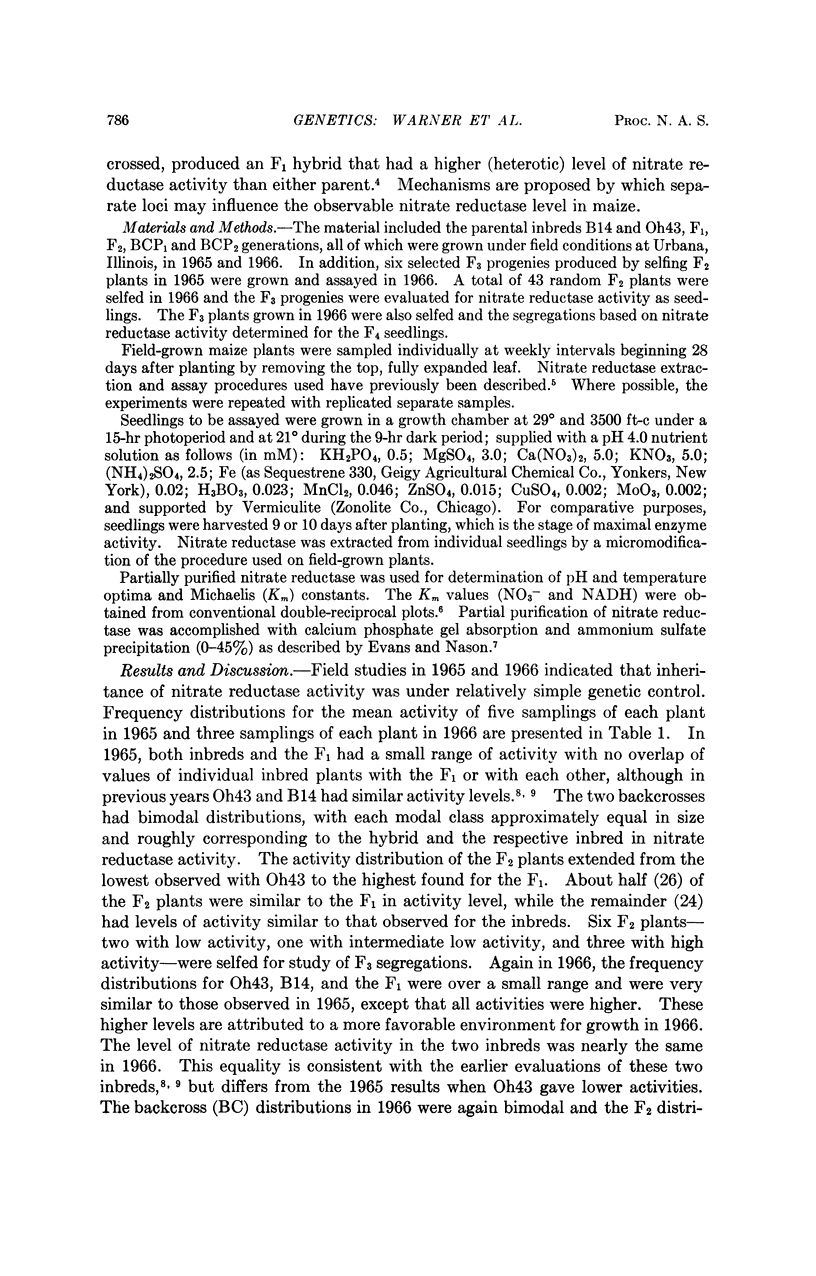
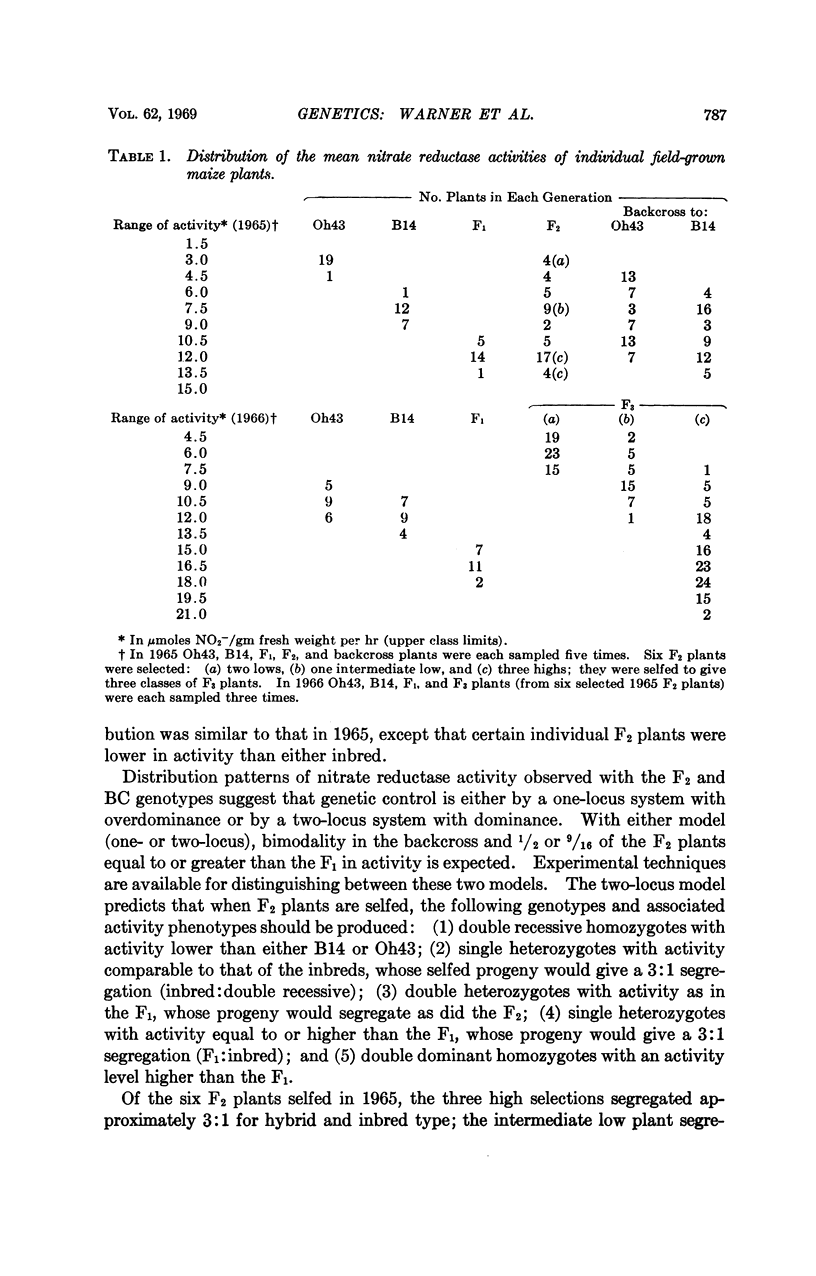
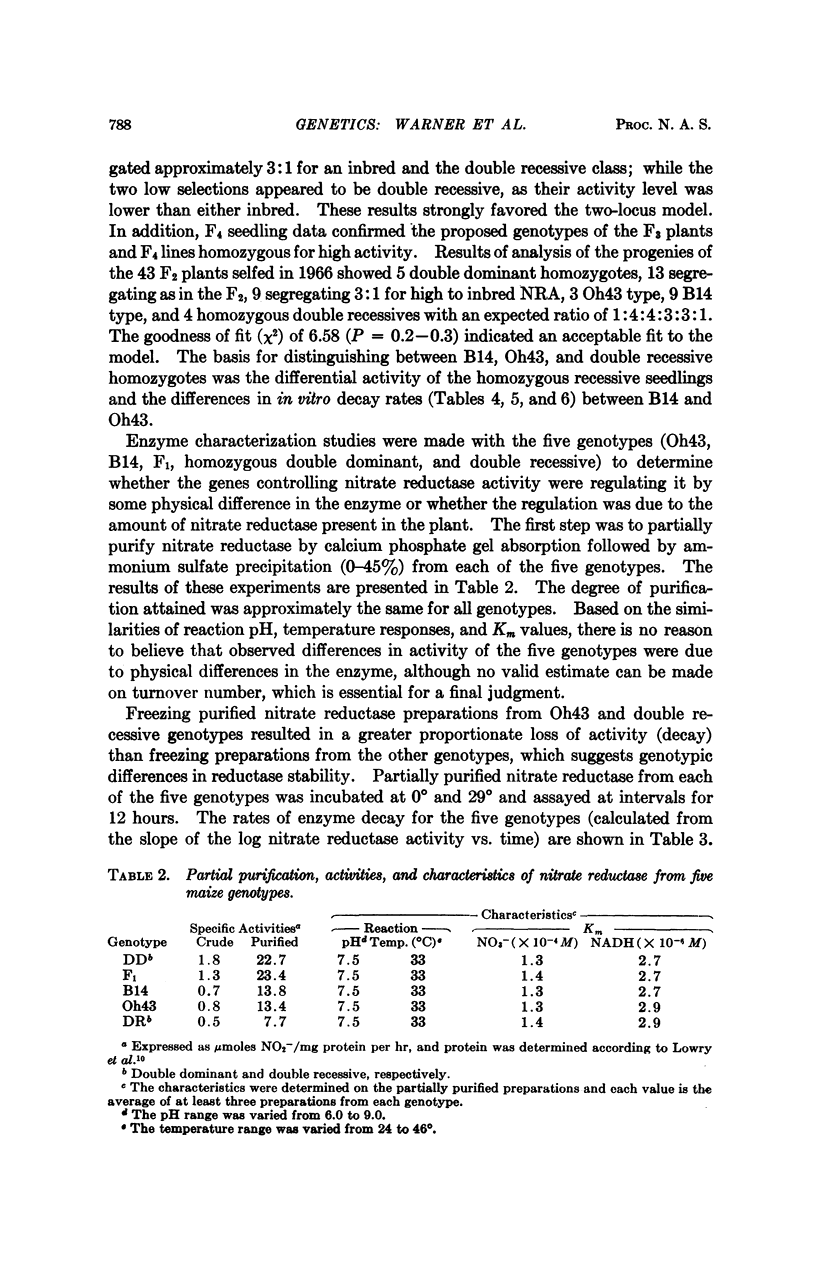
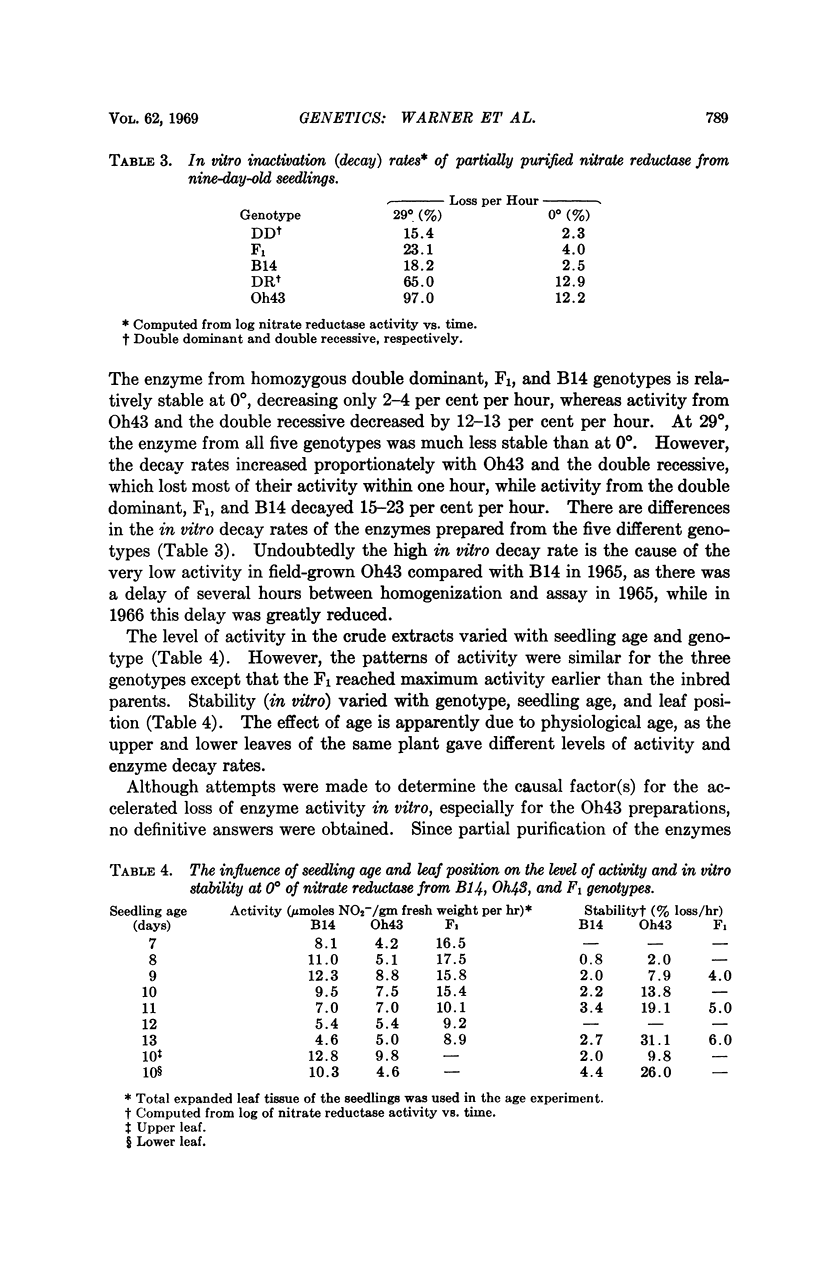
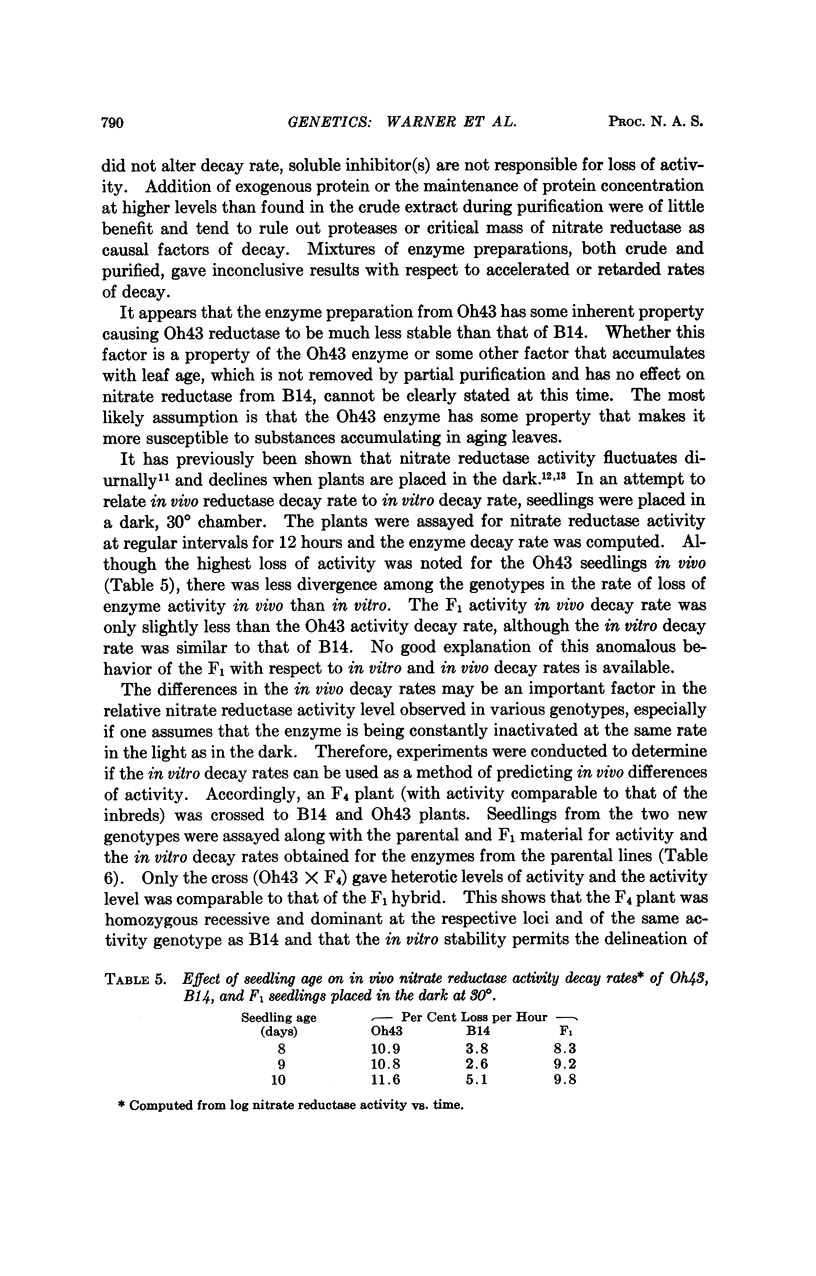
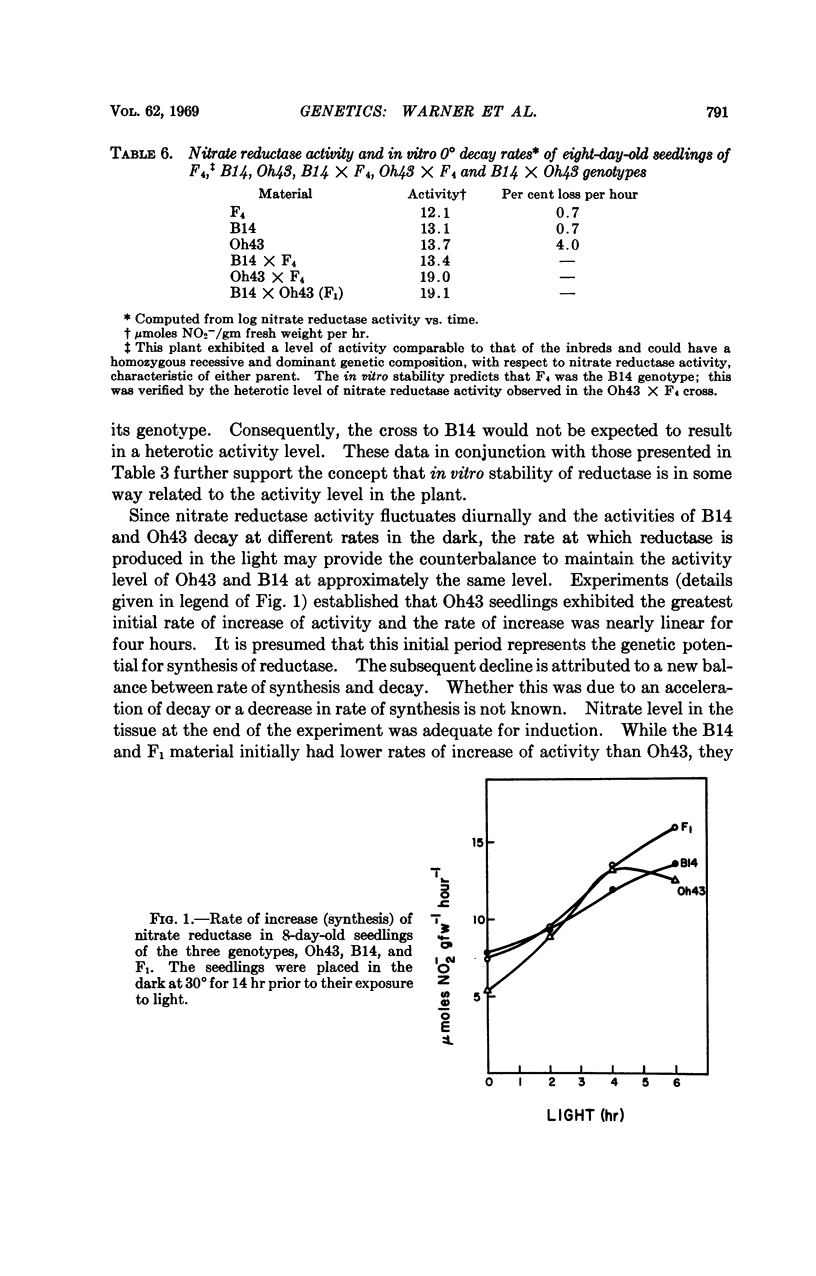
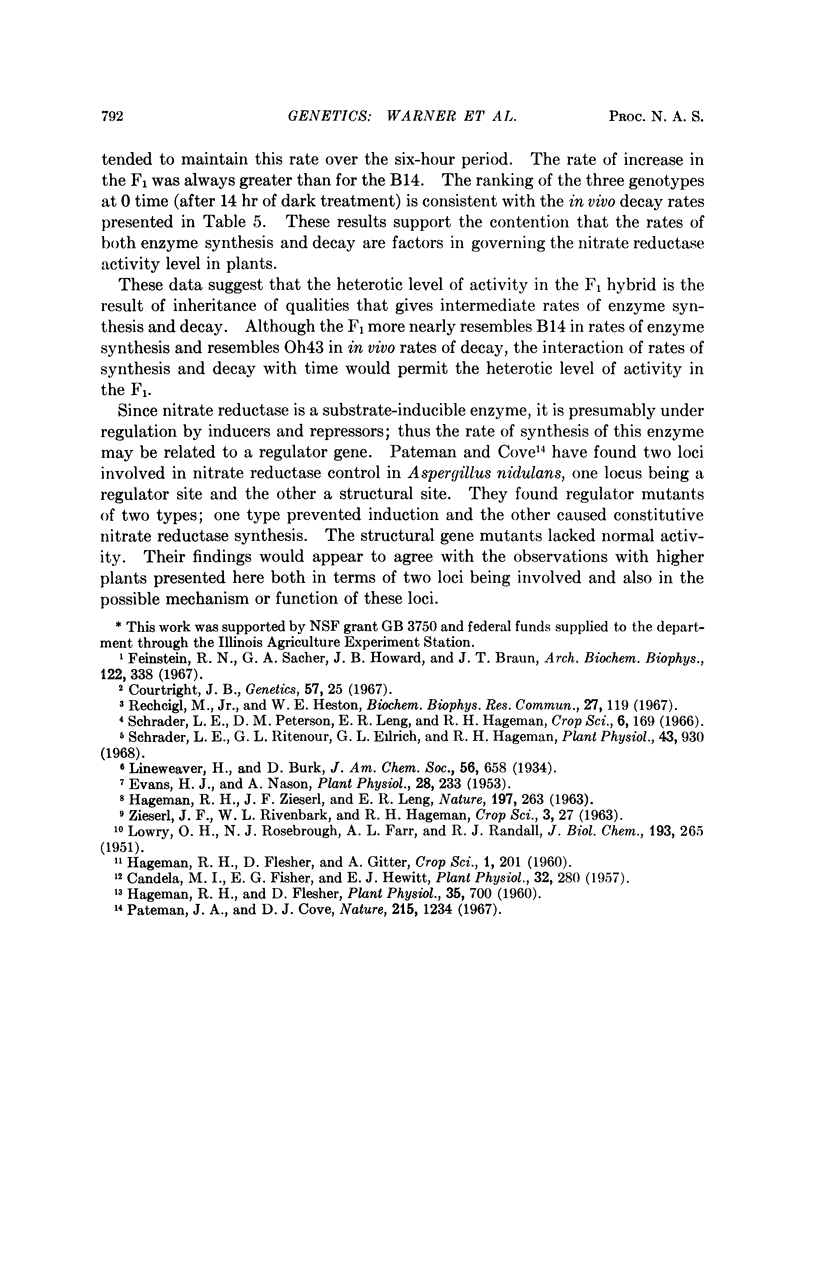
Selected References
These references are in PubMed. This may not be the complete list of references from this article.
- Candela M. I., Fisher E. G., Hewitt E. J. Molybdenum as a Plant Nutrient. X. Some Factors Affecting the Activity of Nitrate Reductase in Cauliflower Plants Grown with Different Nitrogen Sources and Molybdenum Levels in Sand Culture. Plant Physiol. 1957 Jul;32(4):280–288. doi: 10.1104/pp.32.4.280. [DOI] [PMC free article] [PubMed] [Google Scholar]
- Courtright J. B. Polygenic control of aldehyde oxidase in Drosophila. Genetics. 1967 Sep;57(1):25–39. doi: 10.1093/genetics/57.1.25. [DOI] [PMC free article] [PubMed] [Google Scholar]
- Evans H. J., Nason A. Pyridine Nucleotide-Nitrate Reductase from Extracts of Higher Plants. Plant Physiol. 1953 Apr;28(2):233–254. doi: 10.1104/pp.28.2.233. [DOI] [PMC free article] [PubMed] [Google Scholar]
- Feinstein R. N., Sacher G. A., Howard J. B., Braun J. T. Comparative heat stability of blood catalase. Arch Biochem Biophys. 1967 Nov;122(2):338–343. doi: 10.1016/0003-9861(67)90203-2. [DOI] [PubMed] [Google Scholar]
- Hageman R. H., Flesher D. Nitrate Reductase Activity in Corn Seedlings as Affected by Light and Nitrate Content of Nutrient Media. Plant Physiol. 1960 Sep;35(5):700–708. doi: 10.1104/pp.35.5.700. [DOI] [PMC free article] [PubMed] [Google Scholar]
- LOWRY O. H., ROSEBROUGH N. J., FARR A. L., RANDALL R. J. Protein measurement with the Folin phenol reagent. J Biol Chem. 1951 Nov;193(1):265–275. [PubMed] [Google Scholar]
- Pateman J. A., Cove D. J. Regulation of nitrate reduction in Aspergillus nidulans. Nature. 1967 Sep 16;215(5107):1234–1237. doi: 10.1038/2151234a0. [DOI] [PubMed] [Google Scholar]
- Rechcigl M., Jr, Heston W. E. Genetic regulation of enzyme activity in mammalian system by the alteration of the rates of enzyme degradation. Biochem Biophys Res Commun. 1967 Apr 20;27(2):119–124. doi: 10.1016/s0006-291x(67)80049-4. [DOI] [PubMed] [Google Scholar]
- Schrader L. E., Ritenour G. L., Eilrich G. L., Hageman R. H. Some characteristics of nitrate reductase from higher plants. Plant Physiol. 1968 Jun;43(6):930–940. doi: 10.1104/pp.43.6.930. [DOI] [PMC free article] [PubMed] [Google Scholar]


